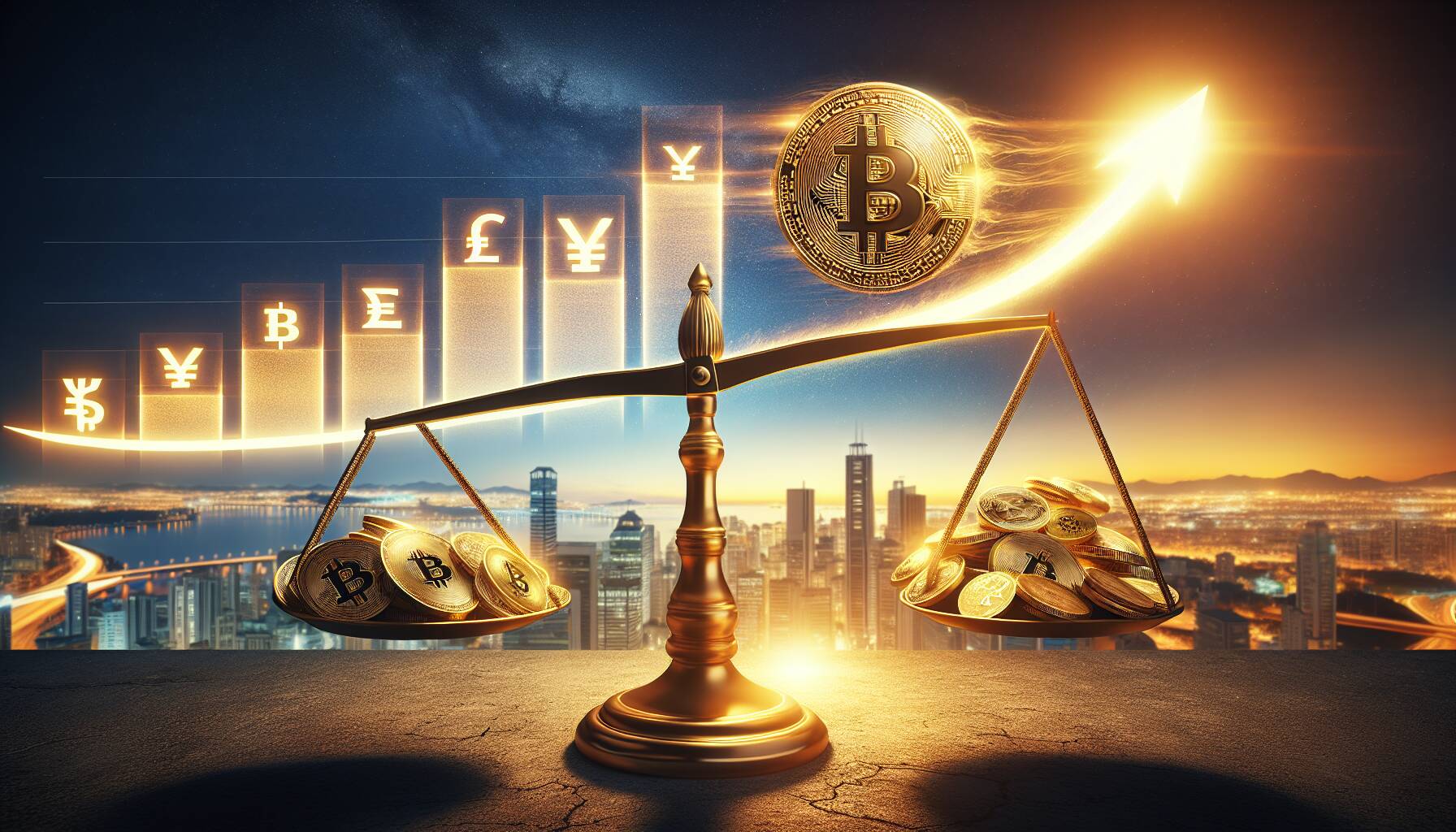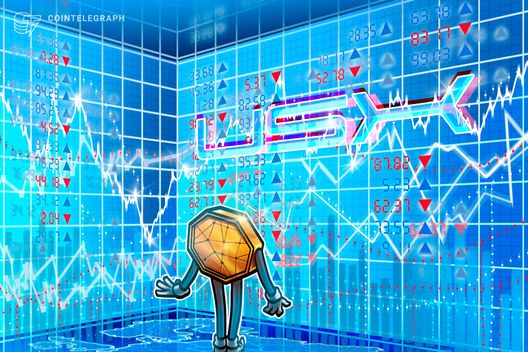The cryptocurrency landscape is witnessing remarkable changes, particularly in the realm of tokenized gold, which reached an astonishing market capitalization of .4 billion in March. This surge comes as trading volumes have hit yearly highs, reflecting a significant shift in investor interest. According to CoinDesk Data’s latest monthly stablecoin report, this upswing coincides with a rally in the price of physical gold, which recently soared above ,000 per ounce, marking fresh all-time highs.
Leading the charge in the tokenized gold market are Tether’s gold-backed token (XAUT) and Paxos’ PAXG, boasting market capitalizations of 9 million and 3 million, respectively. The total trading volume of gold tokens has exceeded .6 billion over the month, showcasing a level of activity not seen in over a year. This enthusiasm for gold-backed digital assets may be attributed to the continued allure of gold as a hedge against economic uncertainty.
Beyond gold, the overall stablecoin market – encompassing tokens pegged to both fiat currencies and commodities – has also surged, surpassing a market cap of 1 billion. This marks the 18th consecutive month of growth for stablecoins. Notably, Tether’s USDT has surged to a record supply of 4 billion, although its market share has dipped to 62.1%, the lowest since March 2023, indicating an increasingly competitive environment among stablecoins. Circle’s USDC also saw encouraging growth, edging close to billion and rising 7% in just one month.
In a notable development on the decentralized finance front, Ethena’s newly launched dollar stablecoin, USDtb, has made waves by rapidly attracting over billion in assets, quickly securing its place as the 8th largest stablecoin by market cap. Meanwhile, the trading volumes on centralized exchanges signal a slight decline in USDT’s dominance, yet it remains strong at 75.7% among the top ten stablecoins.
The regulatory environment is actively influencing the market for euro-denominated stablecoins, particularly following the implementation of the Markets in Crypto-Assets (MiCA) framework. Major exchanges, such as Kraken, have made moves to delist non-compliant stablecoins like USDT for European users, a trend mirrored by platforms like Coinbase and Crypto.com. As a result, Circle’s EURC stablecoin has surged nearly 30%, reaching a market cap of 7 million and commanding a 45% share of all euro stablecoins.

Market Trends in Tokenized Gold and Stablecoins
Key insights on the market capitalization of tokenized gold and stablecoins, their growth, and potential impacts on readers.
- Record Market Capitalization:
The market capitalization of tokenized gold reached .4 billion in March, indicating a growing interest and investment in this sector.
- High Trading Volumes:
Trading volumes for gold tokens exceeded .6 billion, the highest in over a year, emphasizing the increasing liquidity and market activity.
- Leading Gold Tokens:
- Tether’s gold-backed token (XAUT) leads with a market cap of 9 million.
- Paxos’ PAXG follows with a market cap of 3 million.
- Stablecoin Market Growth:
The overall stablecoin market surpassed 1 billion, continuing its growth for 18 consecutive months.
- Tether’s USDT Developments:
Despite increasing to a record supply of 4 billion, Tether’s market share dropped to 62.1%, highlighting a competitive stablecoin landscape.
- Emergence of New Stablecoins:
New entrants like Ethena’s USDtb quickly amassed over billion in assets, indicating rapid innovation in the stablecoin market.
- Regulatory Influences:
Regulatory changes, such as the Markets in Crypto-Assets (MiCA) framework, are reshaping the euro-denominated stablecoin market.
- Exchanges like Kraken and Coinbase have delisted non-compliant stablecoins, impacting their availability in Europe.
- Circle’s EURC stablecoin benefited, growing nearly 30% to 7 million in market cap.
Understanding these trends can help readers make informed decisions regarding investments in tokenized assets and stablecoins, potentially impacting their financial portfolios and investment strategies.
Exploring the Surge in Tokenized Gold and Stablecoin Market Dynamics
In March, the impressive leap in the market capitalization of tokenized gold to .4 billion signifies a noteworthy trend in cryptocurrency and investment realms. The growth in trading volumes, which soared above .6 billion, is a clear indicator of rising interest among investors seeking alternative assets like gold. This surge coincided with a physical rally in gold prices, pushing the value above ,000 per ounce, a pivotal factor that has invigorated interest in gold-backed tokens.
Tether’s XAUT and Paxos’ PAXG serve as major players in this niche, holding substantial portions of the market with capitalizations of 9 million and 3 million, respectively. As tokenization of gold continues to resonate with investors, the strategic positioning of these tokens offers a comparative advantage over traditional gold investment methods, which can be laden with higher handling and storage costs. However, the reliance on market trends and physical gold’s price volatility introduces inherent risks for investors, particularly if gold prices experience downturns.
In contrast, the overall stablecoin market is evolving dramatically. With the market capitalization exceeding 1 billion, this segment is not only growing but becoming increasingly competitive. The decline in Tether’s (USDT) market share to 62.1% as new entrants and existing competitors like Circle’s USDC gain traction illustrates a changing landscape. USDC’s recent 7% growth and Ethena’s USDtb quickly reaching a significant market cap mark indicate a shift in consumer preferences and the advent of innovative financial products.
This changing environment could be a boon for users and investors who thrive on diversification and wish to mitigate risks associated with single-asset exposure. As decentralized finance protocols gain momentum, they offer alternatives that align with evolving regulatory frameworks, such as the MiCA guidelines. Particularly, Circle’s EURC has emerged as a notable beneficiary amid these shifts, illustrating how regulatory compliance can propel a product forward, gaining market share among euro-denominated stablecoins.
However, these advantages come with competitive challenges. The burgeoning number of options presented to consumers could lead to decision fatigue. Investors might find it increasingly difficult to discern which stablecoin or gold-backed token offers the best potential for returns, further complicating their investment strategies. Additionally, as regulatory scrutiny intensifies, firms may face compliance costs that could impact their operational efficiency and profitability.
Ultimately, while the rising tide of tokenized gold and dynamically expanding stablecoin markets presents lucrative opportunities, it also poses challenges. Savvy investors aiming to capitalize on these trends must navigate the complex landscape with informed decisions, balancing the allure of higher yields against the backdrop of evolving risk factors and regulatory frameworks.

















